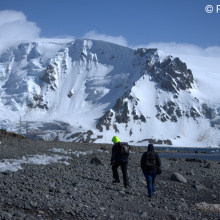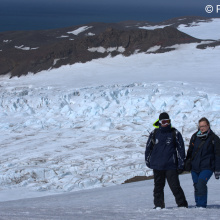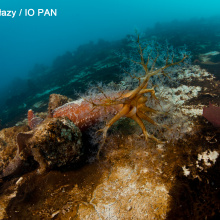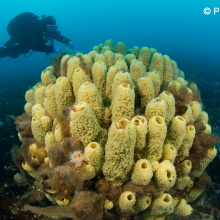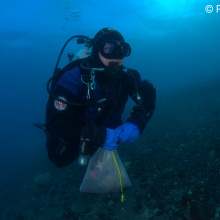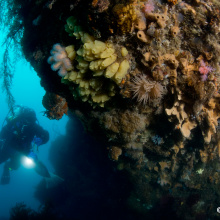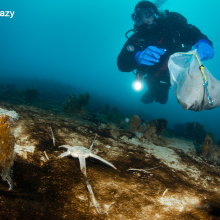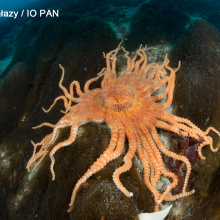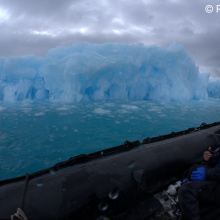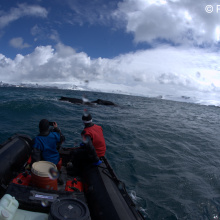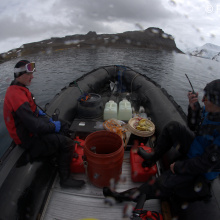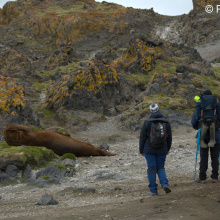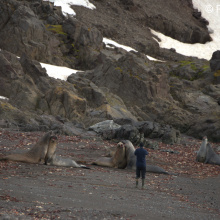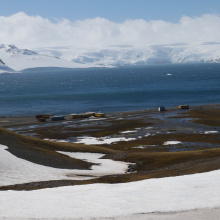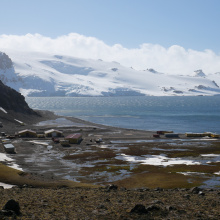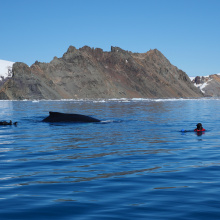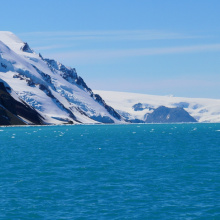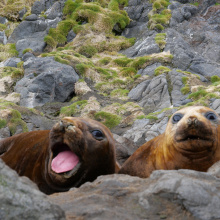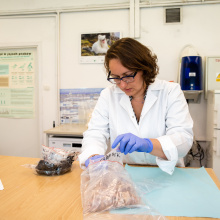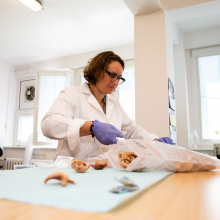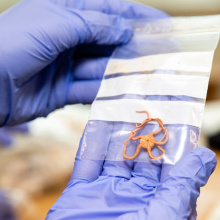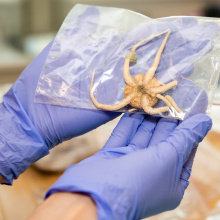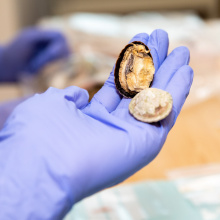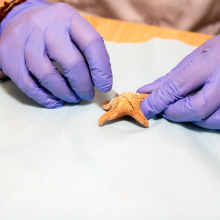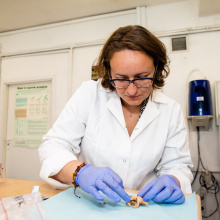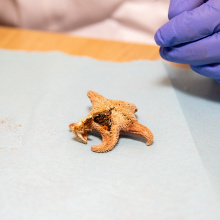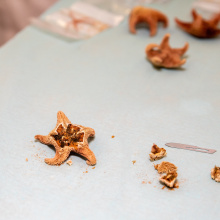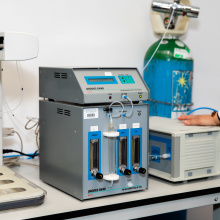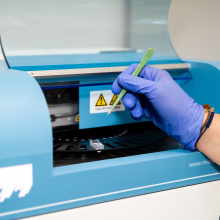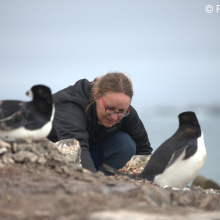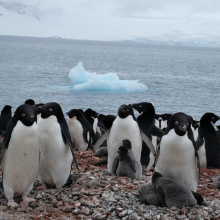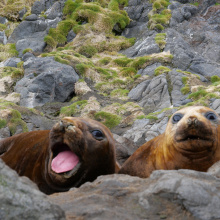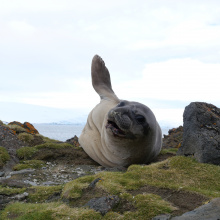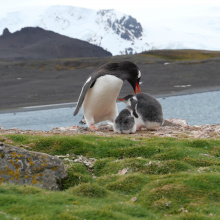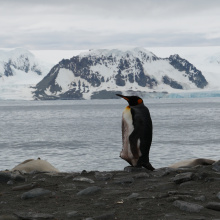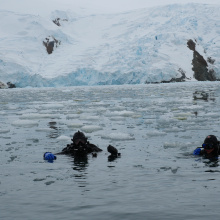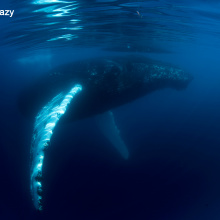Although Antarctica might appear to be an unspoilt, pristine area, it has been the target of research expeditions for years. I talk to dr Dominika Saniewska from the Department of Oceanography and Geography at the University of Gdańsk, who is conducting a project entitled Benthic Organisms as an Indicator of Mercury Sources in the Antarctic Coastal Zone, based on the example of Admiralty Bay, about what this region of the Southern Hemisphere actually looks like.
Elżbieta Michalak-Witkowska: - You work in the Department of Marine Chemistry and Marine Environment Protection at the University of Gdańsk, where you study surface water quality - you previously looked at mercury inflow into the Gulf of Gdańsk, and now you are analysing Admiralty Bay from this angle.
Dr Dominika Saniewska: - That's right. My interest in this subject is not accidental. I come from near Bydgoszcz, this is a lake district, so my whole childhood was connected to lakes and water. Ever since I can remember I have liked to dive. I've always been fascinated by what the 'depths' hide. When I was a teenager I got my first mask and fins. That was the moment when the underwater world opened up to me. There was no turning back - I took a diving course and started studying Oceanography. Both the knowledge I gained during my studies and my diving skills came in handy during my last Antarctic expedition.
- Why do you focus your research specifically on Antarctic and Southern Ocean waters?
- I am cold-loving, so I have always been drawn to the polar regions. In addition, Antarctica, for logistical and financial reasons, seemed unattainable to me. However, it turned out that research in this region was feasible.
- Since Antarctica turned out to be achievable, did you think it would be the same for plankton collection? Not much research has been done in this area. Probably because of the hard-to-reach region and the complicated logistics of sampling?
- Exactly so. Despite the uniqueness of Antarctica, knowledge of the marine environment in the area is still limited. This is due to both the remote location of the Antarctic scientific stations and equipment limitations on site. All this makes polar research challenging for scientists. Complicated logistics mean that people are most likely to go for the samples that are easiest to collect: soil, rocks, plants, faeces or feathers. However, for us oceanographers, this was insufficient material for research. The projects aimed to identify the sources of selected contaminants in the Antarctic and to determine their potential to accumulate in the marine trophic chain. We, therefore, focused mainly on sampling Admiralty Bay, such as water, sediment, suspended solids, plankton or benthic organisms. We collected water, suspended solids and plankton samples from a pontoon. The most logistically difficult material to collect was benthos. In the coastal zone (up to 40-50 metres), diving is the best method for benthic sampling. Diving allows a visual assessment of the study area and the collection of sufficient samples even from hard-to-reach areas. Furthermore, this method is less invasive than dredging, which is particularly important in ecologically sensitive ecosystems such as the Antarctic. However, diving in those areas is still rare, so the material we were able to obtain is unique.
- You went on the expedition together with your husband, as part of a PhD project funded by the National Science Centre, but you are now running your own separate project based on the material collected during the expedition.
- Yes. We organised the trip in cooperation with the Institute of Oceanology PAS and the Institute of Biochemistry and Biophysics PAS, the unit that manages the Polish Antarctic Station named after Henryk Arctowski. During our stay, we were able to collect additional material with additional mercury studies in mind. Shortly after returning from the expedition, I obtained funding, which made research into the circulation of mercury in the Antarctic coastal zone possible.
- It seemed to me that the Antarctic region was still considered pristine, unspoilt.
- Of course. Antarctica is one of the few regions on the planet that is still considered relatively clean. Unfortunately, the reality is somewhat different. Recent studies signal possible contamination of the Antarctic environment by substances of anthropogenic origin, including heavy metals, whose relatively high concentrations have been measured in organisms at different trophic levels of the marine food network. In the case of mercury, concentrations measured in Antarctic organisms are not infrequently higher than in other, more urbanised and anthropogenised areas of the world.
- Why such high concentrations of pollutants?
- The Antarctic has a very peculiar location, surrounded by the circumpolar vortex and the circumpolar ocean current, which to some extent isolate the region from the rest of the world. However, it appears that anthropogenic pollution is overcoming this barrier. This makes the Antarctic vulnerable to an influx of pollutants, whether transported with air masses or via ocean currents, or from local sources such as volcanoes or research stations. Despite low mercury concentrations in abiotic samples (water, sediment), concentrations in birds and mammals reach relatively high values, compared to organisms found in other, more polluted regions.
- Pollutants entering waterways pass on to, among other things, animal and plant organisms. What consequences can this have?
- It is important to remember that there are very specific conditions in the Antarctic. It is cold there, so organisms have a slowed metabolism, plus they live quite a long time. All this means that pollutants accumulate, especially in organisms at the top of the trophic pyramid, such as whales or the sea elephants and penguins we studied. Antarctic organisms are particularly sensitive to pollution. Added to this is the environmental stress caused by progressive climate change. We can expect this amount of stimulus to affect the functioning of the entire Antarctic ecosystem.
- You are in the process of processing the results of your research. What are the most interesting findings?
- We hypothesised that melting glaciers are an important secondary source of mercury in the Antarctic coastal zone. This could potentially pose a threat to the organisms that thrive in the area. Preliminary results showed that an important source of mercury in the Antarctic is the atmosphere. We observed the highest mercury concentrations in lichens. These organisms grow mainly on rocks and derive the water with mineral salts they need to live from the atmosphere. The poisonous substances dissolved in the water easily enter the mould.
The situation was a little different for vascular plants, which have a root system and draw water with minerals mainly from the soil. These had significantly lower mercury concentrations than lichens. However, we observed that mercury concentrations in vascular plants were related to the mercury content of the soil. This allows us to conclude that there is bioavailable mercury in glacier runoff water, snow and soil that can be absorbed by plants.
An interesting conclusion is that penguins and sea elephant colonies are a very important source of mercury, both in soil and plants. On the one hand, we are glad that they are there; on the other hand, these organisms create places called 'hot spots' where mercury accumulates and is incorporated into circulation. In addition, the mercury accumulated in these spots can be transported with water from melting snow or ice to the sea, contributing to an increase in the concentration of this element in the waters surrounding the Antarctic.
- And how do we understand that glaciers are considered an 'ice trap for mercury'?
- Generally, the polar regions are considered to be where mercury that has been emitted at lower latitudes is deposited. Mercury arrives over Antarctica in the form of the elemental gaseous mercury Hg(0). As this form of mercury is not very reactive, it can stay in the atmosphere for up to a year. This causes it to be transported long distances from the source of emission. Then, during the polar summer, gaseous mercury can be oxidised to the more toxic and water-soluble form Hg(II). This phenomenon, called AMDE (Atmospheric Mercury Depletion Event) for short, causes gaseous mercury to disappear from the atmosphere. It is deposited both on the surface of the oceans and land, as well as on snow and glaciers. Some of this mercury is stored in them, which is why glaciers are thought to be such an ice trap for mercury.
- Has your hypothesis been confirmed?
- Our research showed that melting glaciers were a significant source of suspended mercury in Admiralty Bay. However, mercury in suspended form did not bioaccumulate by organisms as quickly as in the dissolved form. This resulted in an increase in mercury concentrations in aquatic organisms as they moved away from the glacier. This was probably due to the precipitation of suspended mercury into the sediments near the glacier. This process may be crucial for benthic organisms, as it can lead to the formation of 'hot spots' in sediments near melting glaciers. Further, more detailed research is needed to understand these relationships.
- Are you planning further polar expeditions?
- Yes. I plan to continue my research on the circulation of mercury in the polar regions. There will soon be cruises during which further samples are to be taken for analysis.
Thank you for the interview and good luck with your further research.

